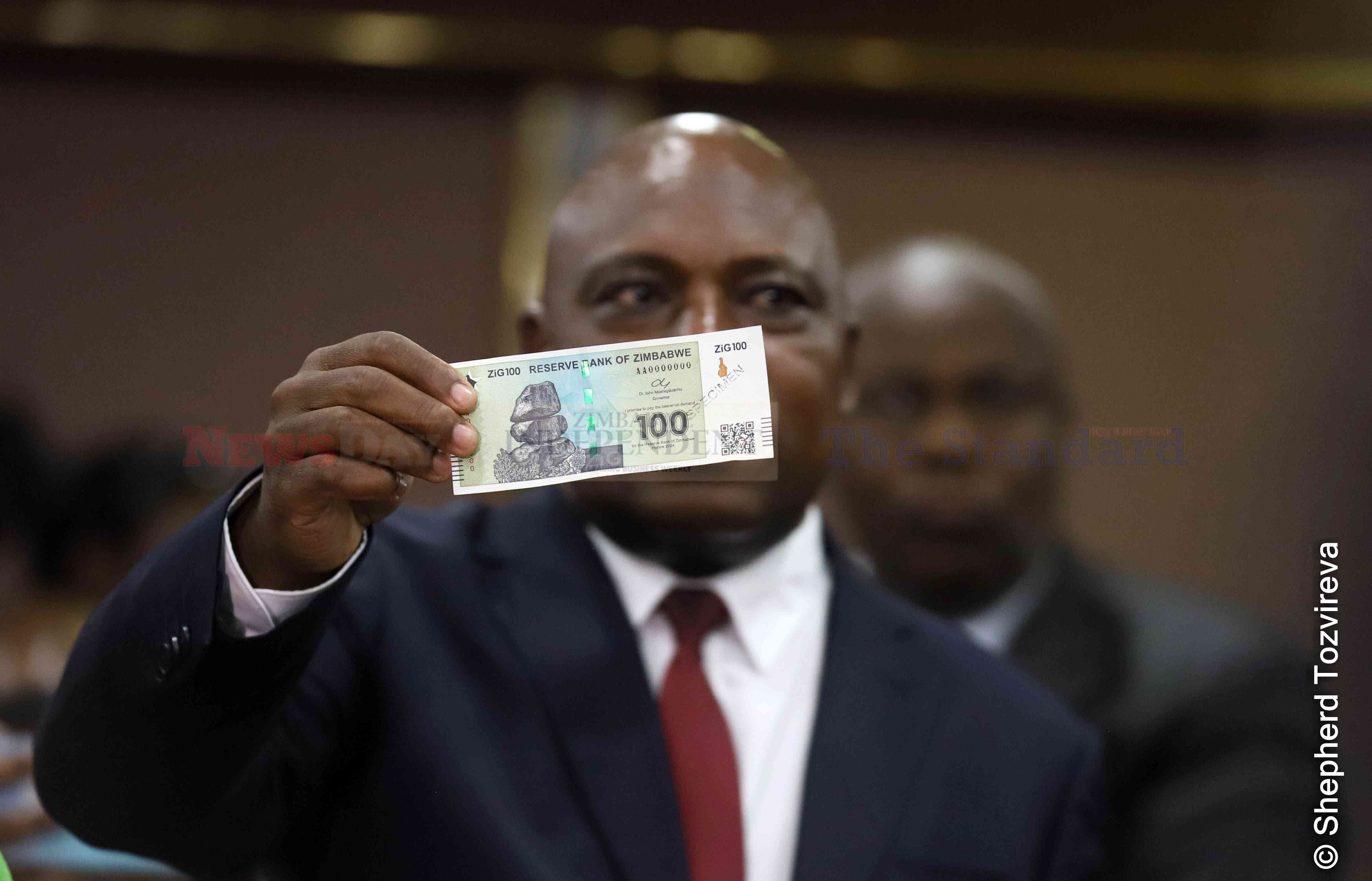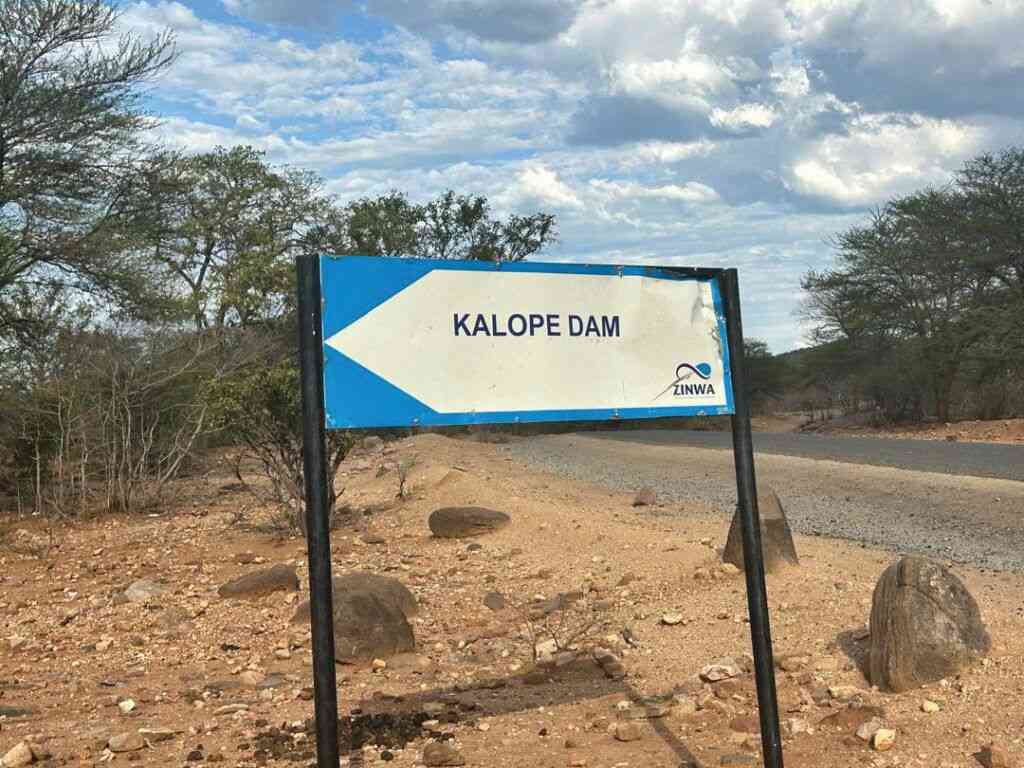
RESERVE Bank of Zimbabwe (RBZ) governor John Mushayavanhu vowed yesterday that the central bank will not engage in quasi-fiscal operations as he launched a structured currency which replaces the battered Zimbabwe dollar.
The Zimbabwe dollar, launched after independence, has experienced a tumultuous history and was abandoned in 2009 after quasi-fiscal eroded the currency’s value leading to a recession.
It returned partially as the real time gross settlement dollar in February 2019 and fully in June that same year.
Speaking at the presentation of the delayed 2024 Monetary Policy Statement yesterday, Mushayavanhu vowed to bring back price and currency stability.
“I do not believe in quasi-fiscal activities. It is not going to happen under my watch. My mandate as spelt out in the Reserve Bank Act is very clear and I have no intention to do other people’s jobs. I will do my job as the central bank governor as defined in the RBZ Act,” he said.
He said the bank had moved all quasi-fiscal balances to the Treasury to clean operations up the balance sheet of the RBZ. The quasi-fiscal operations have been blamed for increasing money supply.
“With effect from April 5, 2024, banks shall convert the current Zimbabwe dollar balances into the new currency which shall be called Zimbabwe Gold (ZiG) to foster simplicity, certainty, and predictability in monetary and financial affairs. The new currency will co-circulate with other foreign currencies in the economy,” Mushayavanhu said.
“The swap rate will be guided by the closing interbank exchange rate and the price of gold as at April 5 2024. The swap rate shall be used to make legitimate conversions of all ZWL$ deposits in the banking sector; all ZWL$ loans and advances made by the sector; ZWL$ treasury bills; all outstanding auction allotments; all export surrender obligations; all prices of goods and services in ZW$; and any other ZW$ denominated obligations.”
- RBZ blocks Harare US dollar charges
- Industry cries foul over new export surrender requirements
- One stitch in time saves nine
- Banks keep NPLs in safe territory
Keep Reading
ZWL$ balances will be converted into ZiG by dividing the interbank forex rate conversion into ZWL$ by the foreign currency exchange rate conversion into ZiG.
For example, on Friday, the central bank announced forex exchange rates of US$1:ZWL$33 903 and US$1:ZiG13,5616. You divide ZWL$33 903 by ZiG13.5616 to get approximately 2 499,9263.
This means, one ZiG is equal to ZWL$2 499.9263 or a ZWL$ equals ZiG0,00040001179836.
So, if you earn ZWL$3 390 300 in monthly wages, in another example, you multiply this amount by 0,00040001179836 to get ZiG1 356, 16. Additionally, you can divide this monthly wage by 2 499.9263 to get ZiG1 356,16.
“On conversion of all current ZWL$ balances, banks are directed to rename all the current ZWL$ accounts as ZiG accounts. Gold-backed digital token accounts (GBDT) will no longer be called ZiG accounts but will be known as GBDT accounts,” Mushayavanhu said.
“All ZWL$ notes and coins held by account holders will be credited into their ZiG accounts using the applicable conversion factor. The banks will continue to accept these deposits for a period of 21 days after April 5, 2024.”
Citizens will use the official US$/ZWL$ and US$/ZiG exchange rates on any given day during the 21 days to convert their ZWL$ balances to ZiG.
The RBZ boss said the central bank had made special arrangements for those without bank accounts to swap their ZWL$ notes and coins at POSB and AFC Commercial Bank within the 21 days.
“ZiG notes and coins shall be issued in denominations made up of 1ZiG, 2ZiG, 5ZiG, 10ZiG, 20Zig, 50ZiG, 100ZiG and 200ZiG which will be distributed through the normal banking channels. The coins shall be introduced in due course,” Mushayavanhu said.
ZiG will be backed by US$285 million in reserve funds held by the RBZ, namely, 2 522 kilogrammes of gold worth US$185 million and foreign currency of US$100 million.
“A structured currency is generally defined as a currency that is pegged to a specific exchange rate or currency basket and backed by a bundle of foreign exchange assets, potentially including gold,” Mushayavanhu said.
“This means a central bank can only issue domestic notes and coins when fully backed by a foreign reserve currency or foreign exchange assets and that the currency is fully convertible in the reserve currency on demand.”
He said that the entire local currency component of reserve money which currently stands at ZWL$2,66 trillion requiring full cover of gold and cash reserves is equivalent to US$80 million.
“I told bank CEOs that if you want to bet against the dollar, game on,” Mushayavanhu warned adding that he had enough arsenal to win that fight.
He said the retention threshold will remain at 75% except for small scale miners.
“I am a stickle for rules and don’t come to me saying you want to retain 100%. This not Animal Farm. We need forex to oil the economy.”
Economist Prosper Chitambara said the success of ZiG was a function of several factors which, among others, include a strict adherence by central government to statutory limits in terms of government’s borrowings from the central bank.
“Market-dynamic forces of demand and supply must have a greater sway in terms of foreign exchange rate determination. That also helps to boost confidence in the whole foreign exchange management system.”
He said the market needed to play a greater role in terms of determining the exchange rate.
The RBZ will also introduce a market determined foreign exchange management system which links the local currency to a composite basket of reserve assets composed of precious minerals and forex balances.
The RBZ also reduced the bank policy rate to 20% per annum from 130% per annum to 20% per annum to reduce the cost of borrowing money and accessing credit.
RBZ removed bank charges for individual bank accounts with a daily balance of US$100 and below or its equivalent in ZiG for a period of up to 30 days.
“The rate is now down to ZiG13,5616. If it is going to be sustainable, reflected on the consumer price, then it’s working, and it will largely stimulate productivity. But, if it doesn’t, there will be challenges,” industrialist Anthony Mandiwanza told NewsDay.

“The point is the banks must be able to give you foreign currency if you go and apply if your account is funded, and the banks have no reason to retain that foreign currency if they can still get that foreign currency in the market. So, it depends on whether the banks will be able to get foreign currency in the open market, but the jury is still out.”
RBZ Monetary Policy Committee member Persistence Gwanyanya said that he was more confident in the monetary policy interventions.
“When we have addressed the question of stability, we naturally expect everything to fall in place,” he said.
“We naturally expect all constituencies' concerns to be addressed. So, the question of stability is seen as having been addressed through the introduction of a structured currency.”
He called on the public to the new measures support.











